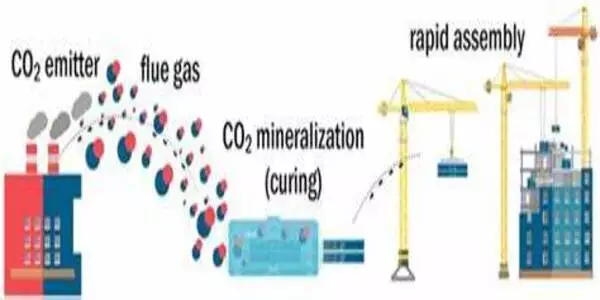Mountains of concrete are frequently transported to landfill or crushed into rubble for roads amid the rubble of a large-scale earthquake, war, or other calamity, and as aged buildings and infrastructure are rebuilt. Experts are inventing a ‘value add’ for old broken concrete by ‘upcycling’ coarse aggregate to generate a strong, durable, and workable concrete utilizing a small bit of a hidden component — graphene.
Mountains of concrete are frequently hauled to landfill or crushed into rubble for roads in the aftermath of a large-scale earthquake, war, or other calamity, and as aging structures and infrastructure are replaced.
Flinders University and The University of Melbourne researchers are inventing a ‘value add’ for old broken concrete by ‘upcycling’ coarse aggregate to generate a strong, durable, and workable concrete using a small amount of a hidden ingredient — graphene.
This new form of treated recycled concrete aggregates may be more expensive to make right now, but when considering circularity and the life cycle of the materials, the costs are coming down rapidly.
Dr Aliakbar Gholampour
The unique technology is gaining traction as additional graphene resources are discovered and mined, lowering the price of that raw material while the cost of cement and aggregates rises, according to the researchers.
They evaluated results on recycled aggregates using a weak graphene solution to make concrete that may be superior to untreated recycled aggregates in cement-based combinations.
Such methods are urgently needed in waste management with demolition and construction waste products expected to rise to almost 2.6 billion tonnes by 2030 globally. At the same time, the production of concrete is adding to climate change with greenhouse gas emissions and extraction methods adding to the ecological impacts.

Improving the quality of recycled concrete aggregates will also play a vital role in the quality, performance and workability of recycled concrete aggregates while reducing the environmental footprints.
“This new form of treated recycled concrete aggregates may be more expensive to make right now, but when considering circularity and the life cycle of the materials, the costs are coming down rapidly,” says Dr Aliakbar Gholampour of Flinders University, the first author of a new article published in Resources, Conservation, and Recycling.
Dr Gholampour, Senior Lecturer in Civil and Structural Engineering at Flinders, believes the novel method’s success could assist meet the world’s expanding need for building materials.
Dr. Gholampour and University of Melbourne collaborator and Senior Research Fellow Dr Massoud Sofi, who is Deputy Director (Research) at the Centre for Recovered Resources (CoRR), have submitted a patent for the approach.





